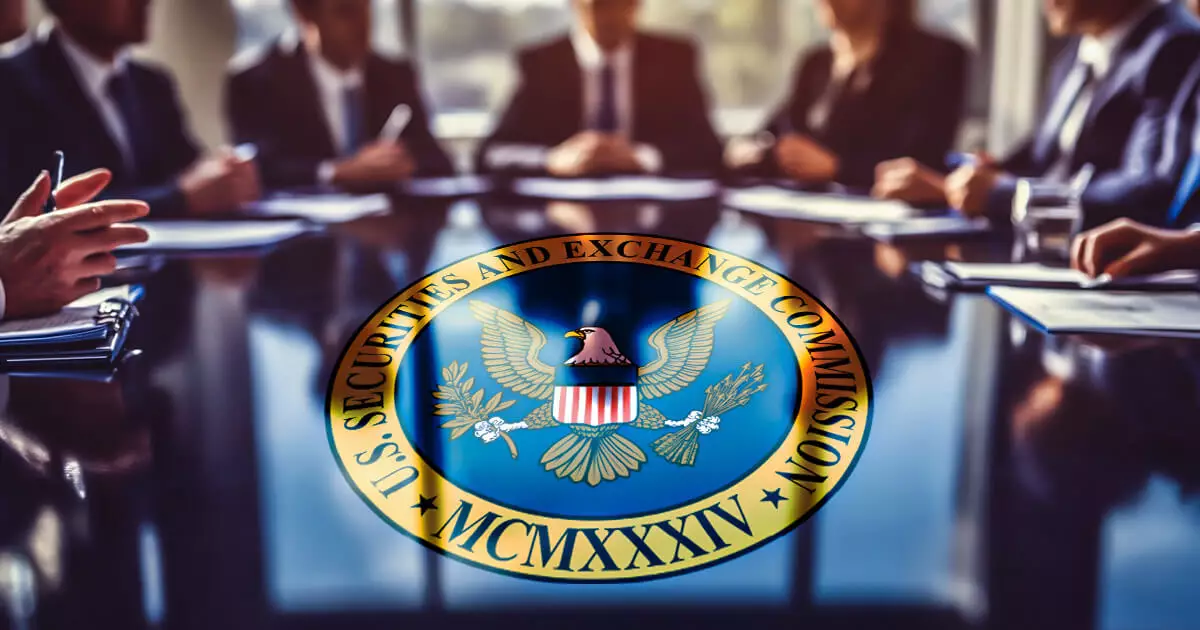In a groundbreaking development, the U.S. Securities and Exchange Commission (SEC) has established a Crypto Task Force that embodies a significant pivot in how digital assets will be regulated. The first roundtable, aptly scheduled for March 21, focuses on what constitutes a security within the complex landscape of cryptocurrency. This initiative, dubbed the “Spring Sprint Toward Crypto Clarity,” intends to open a dialogue with the public, highlighting a collaborative approach that had often felt elusive in previous regulatory efforts. Commissioner Hester Peirce, known for her advocacy of innovation in the crypto space, will lead this task force, bringing an air of optimism and a commitment to establishing a coherent regulatory framework.
This shift in approach is noteworthy. For too long, regulatory bodies have glided through the murky waters of digital asset classification without genuinely considering the input of the community. By engaging stakeholders during these roundtables, the SEC is recognizing that effective regulation cannot occur in a vacuum; it requires the voices of those who are intimately involved in the crypto ecosystem. This is a commendable first step toward crafting rules that respect the nuances of an innovative industry while balancing investor protections—a fundamentally necessary evolution in regulatory philosophy.
The launch of the Crypto Task Force comes on the heels of an enforcement-heavy approach that characterized the SEC’s past dealings with cryptocurrencies. The Commission has amassed a series of fines that many in the industry perceived as overreaching. By shifting toward a framework of regulation that focuses on collaboration rather than reprimand, the SEC is not only signaling a willingness to understand the intricacies of digital assets, it is also acknowledging the limitations of its previous strategies.
There’s no doubt that enforcement is necessary; problematic actors must be held accountable. However, an industry marked by innovation and rapid evolution deserves a regulatory partner rather than a stern enforcer. By strategically staffing the task force with seasoned professionals who understand both regulatory needs and industry realities, such as Michael Selig and Landon Zinda, the SEC aims to strike a balance that has been sorely missing. This dual approach—combining rigor with pragmatism—could very well redefine regulatory practices for the foreseeable future.
At the core of this initiative is the contentious issue of defining when a digital asset meets the criteria of a security. The March 21 roundtable, titled “How We Got Here and How We Get Out—Defining Security Status,” seeks to clarify a crucial yet complicated question that has led to multiple legal disputes in recent years. The SEC’s historical ambiguity in this area has left many cryptocurrency projects in a state of limbo, uncertain about compliance and reporting obligations.
Achieving clarity in this aspect is not merely a bureaucratic necessity; it is essential for fostering an environment where innovation can thrive. If entrepreneurs know the rules of the game, they can bring their ideas to market without fearing litigation or hefty fines. The precarious balance the SEC strives to sustain—encouraging innovation while safeguarding investors—depends significantly on committing to transparency in defining security versus non-security status.
An exciting aspect of the Crypto Task Force is the platform’s emphasis on public engagement. The SEC has often been seen as an aloof entity, making decisions behind closed doors that affect the lives and livelihoods of countless individuals and businesses. Now, as it opens its doors to public forums and discussions, the Commission is taking a step in the right direction.
Furthermore, this new model allows for unprecedented community interaction, where individuals can voice their opinions and share insights directly with SEC officials. It democratizes the regulatory process, transforming it into a collaborative dialogue rather than a top-down edict. Such initiatives not only enhance transparency but also may lead to more robust, nuanced regulations that take into account the real-world challenges faced by crypto market participants.
As the SEC endeavors to articulate a clearer regulatory environment, the implications for innovation in the crypto sector are profound. A structured approach offers budding entrepreneurs and established companies alike the chance to innovate without the specter of aggressive regulation hanging over them. This could lead to promising advancements in technology, finance, and various sectors intertwined with cryptocurrency.
In the end, the effectiveness of the Crypto Task Force’s mission will heavily depend on how well it synthesizes public input, industry insights, and regulatory objectives. If successful, this initiative could usher in an era of renewed faith in regulatory bodies, inviting further exploration and development in a space ripe for innovation. Instead of being a hindrance, regulation may finally align with the spirit of innovation that fuels the cryptocurrency revolution.
















Leave a Reply